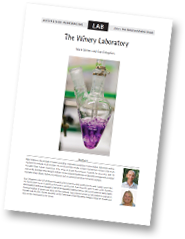
$11.00Add to cart
Table of Contents
1 Introduction
2 Identifying the scope of the operation
3 Laboratory design
3.1 The functions of the laboratory
3.2 Concept design
3.3 Resources
4 Choosing the right equipment
4.1 General equipment
4.2 Instrumentation
4.3 Glassware
4.4 Reagents
4.5 Calibration of equipment
4.6 Keeping an inventory of equipment
5 Laboratory staff
5.1 Staff selection
5.2 Job descriptions
5.3 Training and induction
5.4 Appraisal and review
6 Analysis
6.1 Record keeping in the laboratory
6.2 Sampling techniques
6.3 Analytical procedures
6.4 Basic microbiological techniques
7 Quality management in the laboratory
7.1 Basic quality management principles
7.2 Method validation
7.3 Standardisation of reagents
7.4 Quality control tools
7.5 Identifying appropriate quality control parameters
8 Safety in the laboratory
8.1 Safety requirements for laboratory design
9 External resources
Authors

Mark Gishen
http://www.gishenconsulting.com.auMark Gishen is the principal of Gishen Consulting, a specialist consultancy in wine analysis and process technology based in Adelaide, South Australia. His current portfolio includes a project management contract at the South Australian Wine Industry Association, and a range of private client projects. Previously, he spent more than 14 years at the Australian Wine Research Institute. He has convened workshops on laboratory management at several Australian Wine Industry Technical Conferences and co-authored more than 100 technical papers.

Sue Caloghiris
Sue has more than 20 years’ experience in winery and research laboratories, including 14 years in the analytical service laboratory of The Australian Wine Research Institute. She was the managing director of Bibber International which provided several services to the wine industry, including vintage placements in Australia and internationally. Sue has a Graduate Diploma in Management, and is currently completing a Bachelor of Health Science in Nutritional Medicine.
